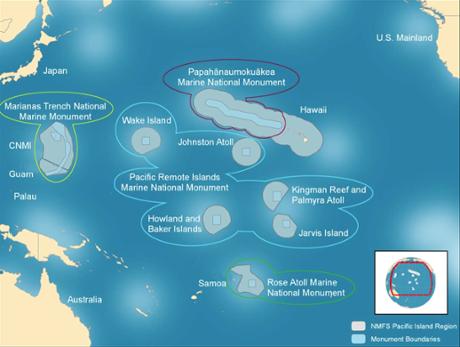Puss Caterpillar or Asp
The puss caterpillar is the larva of an insect in the order Lepidoptera.
This hairy caterpillar is found in the southern states, ranging west
through most of Texas and north to Maryland and Missouri. It feeds on
shade trees such as elm, oak, and sycamore. Puss caterpillars vary in
size from 1.2 in. (32 mm) to 1.4 in. (36 mm).
ASP Sting Treatment: Pain and First Aid after ASP Sting
Getting
stung by an asp is an experience not many people will forget. The asp
is known as one of the most dangerous stingers in North America because
of its capability to deliver a severe sting. It is teardrop in shape,
varies in color, and resembles a tuft of cotton or fur. A sting is
delivered when the asp is rubbed or its hairs get in contact with human
skin. The hair gets embedded into the skin which is responsible for the
delivery of toxins that causes severe pain. Treating an asp sting is
quite easy and there are available first aid remedies so that affected
individuals will not have to experience the pain for longer than
necessary.
Asp Sting Treatment
- The most important and immediate treatment of an asp sting is the relief of pain and the prevention of anaphylaxis.
- The pain from an asp sting usually subsides after an hour but an hour of pain is not something anyone should experience.
- Treatments for asp sting vary from home remedies to over the
counter remedies, to prescription medication depending on the severity
of the symptoms.
Asp Sting Symptoms
- Intense and throbbing pain that can spread towards the armpit or axillary region.
- Erythematous spots over the affected site.
- Headache
- Nausea
- Vomiting
- Intense abdominal pain or discomfort
- Lymphadenopathy
- Lymphadenitis
- Shock
- Respiratory distress
Asp Sting Pain
-
The pain from an asp sting has been described as an intense, throbbing, burning type of pain.
- The pain usually subsides within an hour without treatment.
- The severity of the pain depends on the dose of the venom or the number of hairs embedded on the skin.
Asp Sting First Aid
- Apply ice pack over the affected site.
- Administer oral antihistamines to relieve burning and itching sensations.
- Apply tape over the affected site and pull to remove the hair or stingers.
- See a physician immediately for allergic reactions, severe pain, or eye injuries.
- Severe pain from an asp sting may be treated with morphine,
codeine, and meperidine, all of which are regulated drugs. Standard
pain relievers have no effect on severe asp sting pain.
More specifically, it is a flannel moth (so-called because the adult
moth is clothed in short fine hairs that resemble flannel in texture) in
the family Megalopygidae: from the Greek root
μεγας (MEG-as) = great, vast, large + the Greek root
πυγη (PIDGE-ee) = rump, tail + the Greek patronymic suffix -
ιδες
(eye-DEES) commonly used in zoological taxonomy to indicate a family
name, in reference to a family of moths typically having an exaggerated
tail, honoring the fact that these caterpillars often–but not
always–trail a conspicuous tail of hairs; this family is presently
represented by 23 recognized genera that are found in North America and
in the New World Tropics; in North America as many as 44 species —
generally described as that group of organisms capable of interbreeding and producing fertile offspring
— have been described, some of which may be synonyms, but all of which
are known, while in the larval (caterpillar) stage, to produce extremely
painful stings in humans who come into contact with them.
The species cited most often is
Megalopyge opercularis,
but a number of other species present a similar outer guise, are
equipped with near-identical envenomating structures, and produce a
similar sting on contact with human skin.
Most are now considered to be members of the genus
Megalopyge
, but the crinkled flannel moth–also known as the black-waved flannel
moth–is classified by some authorities as a member of the genus
Lagoa (
Lagoa crispata), and by others as
Megalopyge crispata.
In the material that follows, because the gross features of most, if
not all of these moths are essentially identical, no attempt will be
made to distinguish between them.
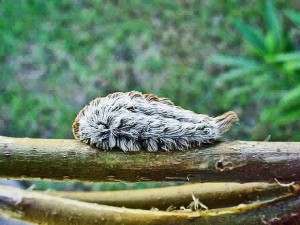
Puss Caterpillar on Twig
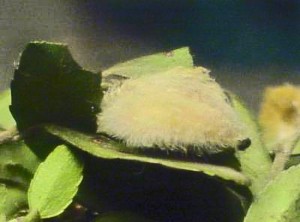
Puss Caterpillar on Yaupon Leaf
The larval stage of this insect is a small (2 cm. long, 1 cm. wide), woolly, pussycat-appearing caterpillar. Its innocent, cuddly-looking appearance belies the numerous sharp,
venom-laden spines, hidden beneath its luxuriant coat of soft hairs. Because these caterpillars appear as innocuous pieces of fluff, children and adults are tempted to pick them up. Even those who know their nasty reputations find it difficult to
believe that these beautifully adorned animals — that have all the
earmarks of a benign, friendly, comforting creature —have the power to
move powerful, grown men to tears of pain and agony. One touch, however, quells all doubts in a blinding instant of truth.
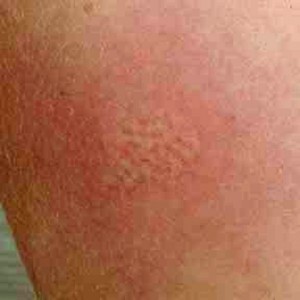
Puss Caterpillar Sting on Right Bicep
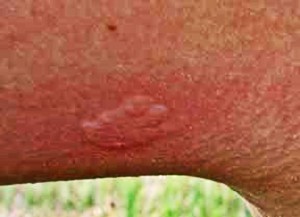
Puss Caterpillar Sting Under Arm
The spines that stick out from each
verruca
(a Latin word meaning “wart”; in this case a glandular excrescence on
the skin of the caterpillar that houses venom glands and is adorned
dorsally with sharp, hollow, venomous spines) on the body of the
caterpillar usually , but not always, induce an immediate onset of excruciating, unrelenting pain.
The pain usually radiates rapidly to the lymph nodes in the armpit or groin, and then to the chest.
Though only rarely representing a true medical emergency, these
symptoms have the feel of a genuine, serious, life-threatening event.
As a result, it is common for victims of puss caterpillar stings to
seek medical assistance at hospital emergency rooms, where they hope
that the E.R. staff will be able to apply appropriate medical interventions.
Sometimes Emergency Room physicians, nurses, and EMTs recognize the
puss caterpillar’s distinctive sting wound immediately, but —
surprisingly often — these personnel have no knowledge of the puss
caterpillar or its sting, much less of the most effective medical
interventions the sting calls for. Individuals who go to emergency rooms for treatment of puss
caterpillar stings may be misdiagnosed by inexperienced medical
personnel as suffering from a wide range of acute and generally serious
medical conditions.
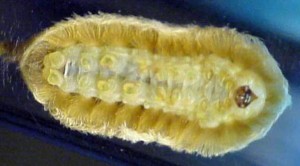
Healthy Puss Caterpillar Ventral Surface
Within minutes or hours of the sting event, a halo of reddened skin,
caused by capillary congestion, forms. The reddened tissue is locally
sensitive, painful, and warm or hot to the touch.
The skin remains reddened but otherwise unmarked for minutes or
hours. As the local redness subsides, a pattern of darker, raised,
nodular lesions forms, usually within 24 hours after the sting. These
darker lesions are arranged in a characteristic pattern. The sting pattern varies based on which portion of the caterpillar touches the body.
The puss caterpillar’s underside is shown in the photo above. This
portion of the caterpillar contacts the surface of the caterpillar’s
track as the caterpillar crawls along. Note the way the hairs along the
edges of the body emerge from swollen “warts” or verrucae (raised
tubercular ridges, arranged along the median of each body segment).
Though the soft hairs themselves are harmless, these same swellings
also sport a multitude of sharp, venomous spines capable of injecting
the caterpillar’s venom into the skin of a sting victim. If the
underside is pressed against the body, the visible sting pattern (that
shows up later) will follow this shape; if one side of the caterpillar
is involved, the sting pattern is usually that of a crosshatched
triangle, with each of the verrucae involved in the sting showing in the
pattern. If the upper surface is pressed against the skin, the sting
pattern is that of a crosshatched oval.
The sting pattern usually begins to show within 24 hours, but the
full pattern may not be expressed for hours or days after the sting
occurs.
The photos below show puss caterpillar stings on a right foot foot
(L) and forearm (R). The lateral (side) surface of a caterpillar had
been crushed against the foot, while the stings on the forearm were
caused when the upper bodies of two caterpillars were crushed by
pressing the arm against a railing where the caterpillars were crawling.
Note the regular pattern of dark red spots in the photos; these spots
correspond to the verrucae in the body of the caterpillar, showing where
the concentrations of fragile, venomous spines penetrated the sting
victim’s skin. In the majority of cases, these spines break off during
penetration and slowly release their store of venom as long as they
remain embedded. Each spine, as described by Nathan C. Foot in his 1921 paper
on the subject, is one-third to one millimeter long, and 15-45 microns
in diameter. Such microscopic structures cannot be seen with the naked
eye. However, because human flesh tends to push embedded foreign objects
outward, even spines that have penetrated deeply will move toward the
surface of the skin–where they may be extracted manually–within a
relatively short time. This fact figures prominently in the treatment
options that should be considered when dealing with a puss caterpillar
sting.
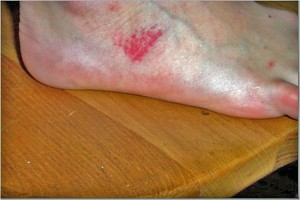
Puss Caterpillar Sting on Side of Foot
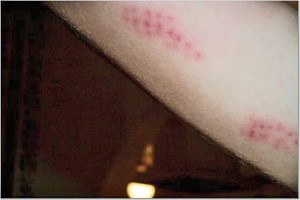
Puss Caterpillar Sting Under forearm
These photos were taken several hours after the sting event.
Tampa Bay FL has a website you can view that gives information on many types of caterpillars:
http://www.poisoncentertampa.org/venomous-critters/caterpillars.aspx
—————————————–
Taxonomy:
- Kingdom Animalia (ahn-uh-MAYHL-yuh) — first described in 1758 by the Swedish taxonomist Carolus Linnaeus (1707 – 1778), using the Latin word animal = “a living being,” from the Latin word anima
= “vital breath”, to refer to multicellular, eukaryotic organisms whose
body plans become fixed during development, some of which undergo
additional processes of metamorphosis later in their lives; most of
which are motile, and thus exhibit spontaneous and independent
movements; and all of whom are heterotrophs that feed by ingesting other
organisms or their products;
- Phylum Arthropoda (ahr-THROPP-uh-duh) —
first described in 1829 by the French zoologist Pierre André Latreille
[November 20, 1762 – February 6, 1833], using the two Greek roots αρθρον (AR-thrawn) = jointed + ποδ (pawd)
= foot, in an obvious reference to animals with jointed feet, but in
the more narrow context of the invertebrates, which have segmented
bodies as well as jointed appendages;
- Class Insecta (ehn-SEK-tuh) — first described in 1758 by the Swedish taxonomist Carolus Linnaeus (1707 – 1778), using the Latin word insectum,
a calque of the Greek word ἔντομον ( EN-toh-mawn) = “(that which is)
cut into sections”; comprised of arthropods with chitinous external
(exo-) skeletons, a three part body composed of a distinct head, thorax,
and abdomen, the midmost part having three pairs of jointed legs, and
the foremost part having a pair of compound eyes and antennae;
- Subclass Pterygota
(tare-ee-GOH-tah) — first described in 1888 by Lang, using the Greek
roots πτερυξ (TARE-oos) = wing, to refer to insects with wings, or that
had wings but in the process of evolution have since lost them;
- Infraclass Neoptera
(nee-OPP-tur-uh) — first described in 1890 by the Dutch entomologist
Frederick Maurits van der Wulp (1818-1899) using the Greek roots νεος
(NEE-ose) = youthful, new + πτερυ (TARE-ohn) = wing, to refer to winged
insects that are capable of folding their wings over their abdomens, in
contrast to more primitive winged insects that are unable to flex their
wings in this manner (e.g., the dragonflies, in the infraclass
Paleoptera);
- Superorder Endopterygota (ehn-doh-tare-ee-GOH-tah)
— first described by the English physician and entomologist David Sharp
(1840-1922) using the Greek root ενδον (ENN-dohn) = within + the
established expression pterygota (see above) to refer to insects within
the latter subclass that undergo complete metamorphosis, i.e., larval,
pupal, and adult stages;
- Order Lepidoptera (lep-uh-DOPP-tur-uh)
— first formally described in 1758 (though he coined the expression in
1735, informally) by the Swedish taxonomist Carolus Linnaeus (1707 –
1778), using the Greek roots λεπιδωτος (lepp-eh-DOH-tose) = scaly +
πτερυ (TARE-ohn) = wing, to refer to insects with scales covering their
wings, i.e., the moths and butterflies;
- Family Megalopygidae
(megg-uh-low-PIDGE-uh-dee) — from the Greek root μεγας (MEG-as) =
great, vast, large + the Greek root πυγη (PIDGE-ee) = rump, tail + the
Greek patronymic suffix -ιδες (eye-DEES) commonly used in zoological
taxonomy to indicate a family name, in reference to a family of moths
typically having an exaggerated tail, honoring the fact that these
caterpillars often–but not always–trail a conspicuous tail of hairs;
this family is presently represented by 23 recognized genera that are
found in North America and in the New World Tropics; in North America as
many as 44 species have been described, some of which may be synonyms,
but all of which are known, while in the larval (caterpillar) stage, to
produce extremely painful stings in humans who come into contact with
them;
—————————————–
REFERENCES:
- Avilán, Luisana, et al. 2010. Description of envenomation by the “gusano-pollo” caterpillar (Megalopyge opercularis) in Venezuela. Invest Clin 51(1): 127 – 132.
- Bennett, Gary W. 2010. Truman’s Scientific Guide to Pest Management Operations 7th Edition
 . Purdue University.
. Purdue University.
- Borror, Donald J., and Richard E. White. 1970. A Field Guide to Insects: America North of Mexico
 . Houghton Mifflin Company
. Houghton Mifflin Company
- Bradley, Fern Marshall, et al. 2010. The
Organic Gardener’s Handbook of Natural Pest and Disease Control: A
Complete Guide to Maintaining a Healthy Garden and Yard the
Earth-Friendly Way (Rodale Organic Gardening Books)
 . Rodale Inc.
. Rodale Inc.
- Eagleman, David M. 2007. Envenomation by the asp caterpillar (Megalopyge opercularis). Clinical Toxicology (2007) iFirst, 1–5.
- Epstein, Marc E. 1995. Evolution of locomotion in slug caterpillars (Lepidoptera: Zygaenoidea: Limacodid group). J. Res. Lepidoptera 34:1-13.
- Foot, Nathan Chandler. 1922. Pathology of the Dermatitis caused by Megalopyge opercularis, a Texan caterpillar. JEM 35(5): 1 May 1922.
- Khalaf, Kamel T. 1974. Nonasceptic Wheat Germ Diet for Megalopyge opercularis (Lepidoptera: Megalopygidae). The Florida Entomologist 57(4):377-381.
- Klotz, John H. et al. 2009. Animal Bites and Stings with Anaphylactic Potential. J. Emerg. Med. 36(2):148-156.
- Lifton, Bernice. 2005. Bug Busters: Poison-Free Pest Controls for Your House and Garden
 . Square One Publishers.
. Square One Publishers.
- Mallis, Arnold, Stoy Hedges (Ed.) et al. 2011. The Mallis Handbook of Pest Control, 10th Edition
 . The Mallis Handbook Company.
. The Mallis Handbook Company.
- Neck, Raymond W. 1976. Lepidopteran Foodplant Records from Texas. J. Res. Lepidoptera 15(2):75-82.
- Steen. Christopher J. et al. Arthropods in dermatology. J. Am. Dermatol. 50(6):819-842.
- Stewart, Amy. 2011. Wicked Bugs: The Louse That Conquered Napoleon’s Army & Other Diabolical Insects
 . Algonquin Books of Chapel Hill.
. Algonquin Books of Chapel Hill.
This article (in part) by Jerry Cates, first published on 7 March 2010, was last revised on 22 January 2014. © Bugsinthenews Vol. 11:03(09).

